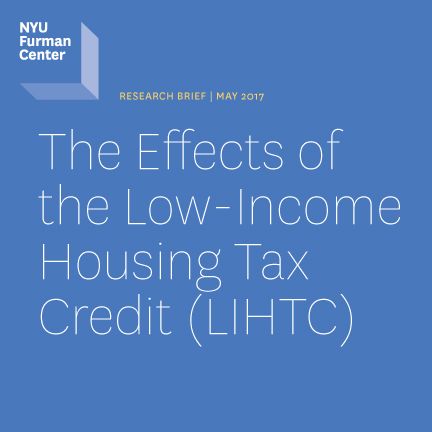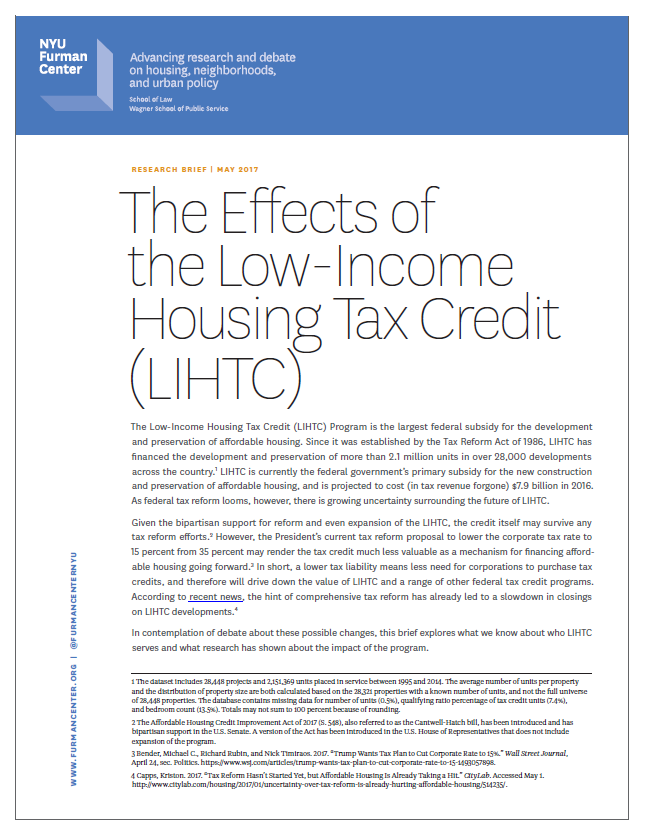
The Effects of the Low-Income Housing Tax Credit (LIHTC)

A new research brief by the NYU Furman Center explores what we know about whom the Low-Income Housing Tax Credit (LIHTC) program serves and what research finds about the impact of the program.
The Low-Income Housing Tax Credit (LIHTC) Program is the largest federal subsidy for the development and preservation of affordable housing. Since it was established by the Tax Reform Act of 1986, LIHTC has financed the development and preservation of more than 2.1 million units in over 28,000 developments across the country.
As federal tax reform looms, however, there is growing uncertainty surrounding the future of LIHTC. In contemplation of debate about these possible changes, this research brief explores what we know about whom LIHTC serves and what research finds about the impact of the program.
Research outlined in the brief includes:
- Almost half of tenants in LIHTC units are extremely low income, with annual household incomes below the federal poverty level (HUD).
- New evidence suggests that LIHTC development revitalizes low-income neighborhoods (Diamond & McQuade).
- There is little evidence that LIHTC developments affect the overall concentration of poverty (Ellen, Horn, & O’Regan).
- Tenants living in LIHTC developments have access to slightly better schools than households receiving other forms of housing assistance (Ellen & Horn).
- Low-income housing development brings with it significant reductions in crime (Freedman & Owens).
Read more: Research Brief: The Effects of the Low-Income Housing Tax Credit (LIHTC)
See more from the NYU Furman Center on the LIHTC program >>



